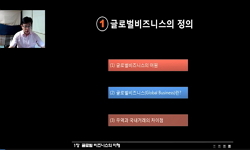1980년초부터 일본은 환율조정 및 재정지출 확대 등 무역흑자를 줄이기 위해 정책에도 불구하고 지속적인 무역흑자를 기록하였다. 지속적인 무역흑자의 원인을 파악하기 위해 본 연구는 일...
http://chineseinput.net/에서 pinyin(병음)방식으로 중국어를 변환할 수 있습니다.
변환된 중국어를 복사하여 사용하시면 됩니다.
- 中文 을 입력하시려면 zhongwen을 입력하시고 space를누르시면됩니다.
- 北京 을 입력하시려면 beijing을 입력하시고 space를 누르시면 됩니다.

일본의 실질환율과 무역수지의 장기적 결정요인 = Long-run determinants of the real exchange rate and trade balance in Japan
한글로보기https://www.riss.kr/link?id=A102133363
- 저자
- 발행기관
- 학술지명
- 권호사항
-
발행연도
2007
-
작성언어
-
-
주제어
실질환율 ; 무역수지 ; 화폐교란 ; 구조적 VAR모형 ; Real Exchange Rates ; Trade Balance ; Money Shocks ; Structural VAR
-
KDC
300
-
등재정보
KCI등재
-
자료형태
학술저널
- 발행기관 URL
-
수록면
13-34(22쪽)
- 제공처
-
0
상세조회 -
0
다운로드
부가정보
국문 초록 (Abstract)
1980년초부터 일본은 환율조정 및 재정지출 확대 등 무역흑자를 줄이기 위해 정책에도 불구하고 지속적인 무역흑자를 기록하였다. 지속적인 무역흑자의 원인을 파악하기 위해 본 연구는 일본의 실질환율과 무역수지의 장기결정요인을 분석한다. 본 연구는 특히 명목 혹은 화폐교란이 실질환율과 무역수지에 장기적인 영향을 미친다는 최근의 이론 및 실증 분석에 주목한다. 이러한 결과를 반영하여 본 연구에서 제시하는 VAR모형은 구조적 교란 항을 식별할 때 구매력평가설을 사용하지 않았다. 실증분석 결과 화폐교란은 무역수지를 설명하는 가장 중요한 요인으로 나타났다. 화폐교란은 또한 실질환율의 장기적인 절하를 초래하여 결국 이를 통해 무역흑자가 지속된 것으로 보인다. 본 연구의 이러한 결과는 일본이 1985년 Plaza Accord이래 무역흑자를 효과적으로 줄이기 위해서 긴축통화정책을 병행했어야 함을 시사한다.
다국어 초록 (Multilingual Abstract)
Since the early 1980s, Japan has continued to record trade surpluses despite the introduction of conventional measures such as exchange rate adjustment and fiscal stimulus to reduce it. To find possible reasons for such persistent trade surpluses, thi...
Since the early 1980s, Japan has continued to record trade surpluses despite the introduction of conventional measures such as exchange rate adjustment and fiscal stimulus to reduce it. To find possible reasons for such persistent trade surpluses, this paper examines the long-run determinants of the real exchange rate and trade balance in Japan. The paper is particularly motivated by recent theoretical and empirical evidence that nominal/money shocks may have long-run effects on both the real exchange rate and the trade balance. To reflect this development, the VAR model identifies underlying structural shocks in the model without reference to the long-run purchasing power parity condition. Empirical evidence shows that money shocks account for most of the long-run variability in the trade balance. We are able to explain this finding about the trade balance since money shocks also cause a significant long-run depreciation in the real exchange rate. An implication is that to reduce its trade surplus effectively after the 1985 Plaza Accord, Japan should have maintained tight monetary policy.
동일학술지(권/호) 다른 논문
-
미국 물류기업의 투자와 현금흐름이 기업가치에 미치는 영향에 관한 실증적 연구
- 국제지역학회
- 박영태 ( Young Tae Park )
- 2007
- KCI등재
-
한국기업의 FDI 의사결정과 투자대상국의 지적재산권 보호에 대한 연구
- 국제지역학회
- 박건영 ( Kon Young Park )
- 2007
- KCI등재
-
지구화 시대에 있어서 안보 개념의 다차원적 분석: 인간안보를 중심으로
- 국제지역학회
- 박한규 ( Hahn Kyu Park )
- 2007
- KCI등재
-
BRICs의 세계화, 민주화, 그리고 반부패: 신자유주의적 시각의 경험적 평가
- 국제지역학회
- 이상환 ( Sang Hwan Lee )
- 2007
- KCI등재




 KISS
KISS



